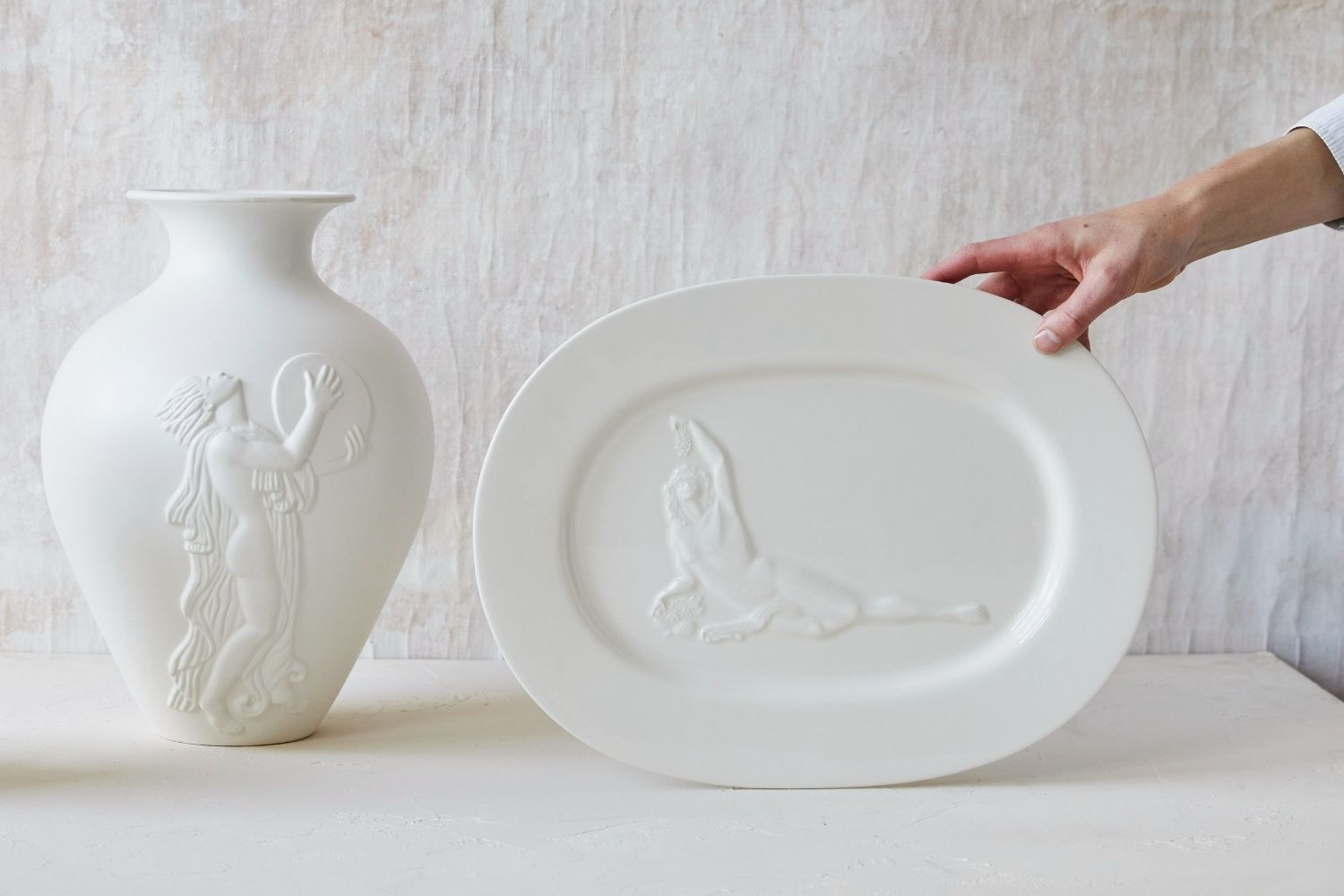Bacchus: Representation in Art and Ceramics Through the Ages

From ancient temples to modern tabletops, Bacchus, the Roman god of wine, festivity, and divine ecstasy, has been a recurring figure in art, sculpture, and ceramics for over two millennia. As the god of both indulgence and transformation, Bacchus continues to inspire makers across eras - now reborn in everything from neoclassical paintings to contemporary homeware... including our Bacchus Ceramic Serving Plate, a sculpted nod to mythology that invites storytelling to the table!
Who Was Bacchus?

Known to the Greeks as Dionysus, Bacchus was the Roman incarnation of the god of:
-
Wine and vineyards
-
Theatre and performance
-
Fertility, chaos, and liberation
Unlike other gods of war, order, or intellect, Bacchus celebrates the wild, the unrestrained, the instinctive. He represents a sacred escape from structure - encouraging surrender to passion, creativity, and human pleasure.
Bacchus in Art History
 Caravaggio’s Bacchus (1595)Image credit: Uffizi Gallery - Attic Vase Depicting Dionysian Scene Image credit: British Museum
Caravaggio’s Bacchus (1595)Image credit: Uffizi Gallery - Attic Vase Depicting Dionysian Scene Image credit: British Museum
Throughout the centuries, Bacchus has been immortalised in some of the most iconic works of art:
Classical Sculpture
Roman villas and gardens often featured marble busts of Bacchus, crowned with grapevines and ivy. He’s depicted youthful and androgynous, symbolising the boundary-blurring nature of ecstasy.
Renaissance & Baroque Painting
Caravaggio’s Bacchus (1595) presents the god lounging with a glass of wine - sensual, human, and mysterious. Artists like Titian, Rubens, and Poussin portrayed Bacchic scenes filled with nymphs, satyrs, and celebratory chaos.
Ceramics & Decorative Arts
Ancient Attic vases depict Dionysian rites, grape harvests, and theatrical scenes. 18th and 19th-century porcelain makers like Wedgwood and Meissen introduced Bacchus motifs into aristocratic tableware.
Bacchus in Ceramics

Ceramics have long served as a canvas for storytelling. With its connection to earth, fire and form, clay becomes a medium where myth meets daily life. Bacchus, god of elemental pleasures, appears often in ceramics throughout history.
In ceramic works, Bacchus is often represented:
-
Crowned in ivy and grapevines
-
Reclining in revelry or surrounded by dancers
-
Framed by theatrical and organic motifs like masks, goblets, and vines
His image in ceramics invites the user not just to serve - but to celebrate!
A Modern Tribute: The Issy Granger Bacchus Ceramic Serving Plate

Bringing myth to the modern table, the Bacchus Ceramic Serving Plate by Issy blends timeless symbolism with contemporary craftsmanship.
Key Features:
-
Hand-carved relief of Bacchus, referencing classical sculpture
-
Crafted from white ceramic, balancing minimalist elegance with mythic presence
-
Designed to serve as both functional tableware and a decorative statement piece
Whether you're hosting a dinner party or adorning your kitchen shelves, this piece invites myth, artistry, and meaning into your everyday life.
A Final Toast
While Bacchus lived for excess, we like to think his true message was about connection, creativity, and celebrating the moment - however big or small!